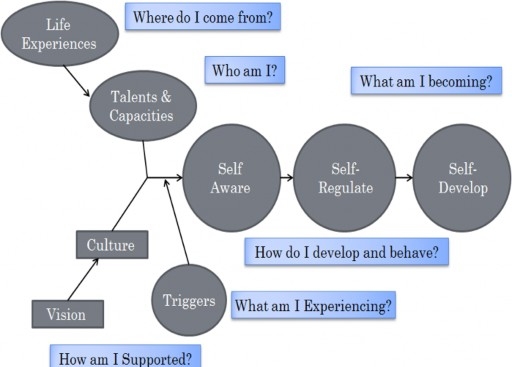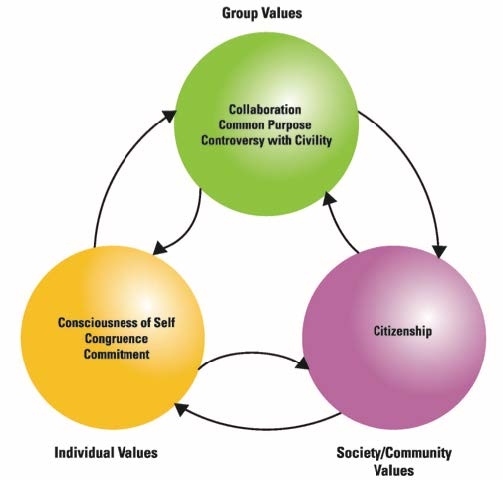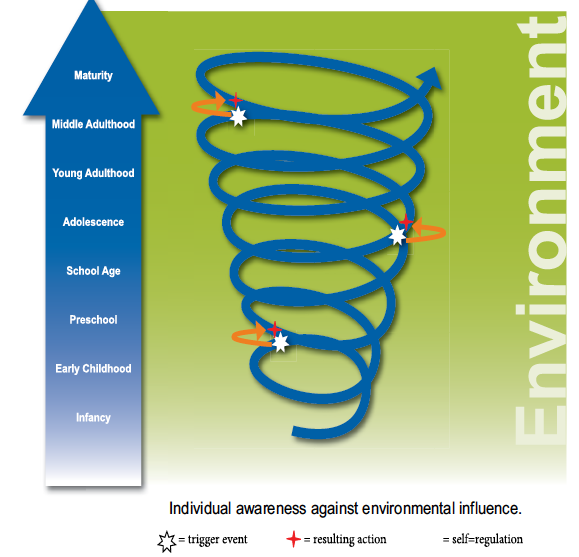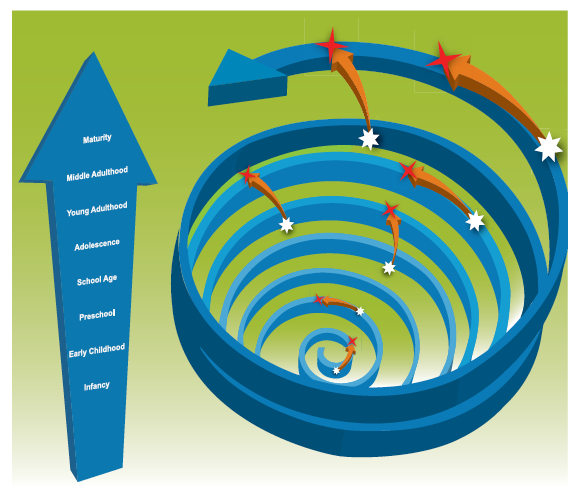A Model of Leader Development Across the Lifespan
ID
ALCE-104P (ALCE-241P)
EXPERT REVIEWED
Models of Leadership Development
A survey by the Center for Public Leadership suggests that despite some Americans’ belief that “our leaders are effective and do a good job,” 69 percent of Americans believe there is a leadership crisis (Rosenthal 2012, p.1). Extension is well-positioned to address this need for leader development due to our role in developing and delivering leadership programs that serve youth, college-aged students, and adults. Even still, practitioners are desperately trying to respond to this crisis with deliberate and appropriately planned leadership development programming (Murphy and Johnson 2011).
This serves as a call to action for the Cooperative Extension Service, inviting us to consider the tools and approaches to effective, impactful leader development across the lifespan. The notion of “lifespan” encompasses the events from an individual’s birth to death. The development of leaders extends beyond the bounds of youth and professional development; therefore, it is appropriate to consider the leader’s entire life experience (Liu et al. 2020; Rabinowitz 2014). This publication provides a brief definition of leadership, explains the model for leader development across a person’s lifespan, provides practical tips for educators, and portrays an example of leader development across the lifespan.
“If your actions inspire others to dream more, learn more, do more, and become more, you are a leader.”
Quotes like this one, attributed to John Quincy Adams (Williams 2002), help to identify who is and who could be a leader. Thus, leadership is defined as the collective interactions that inspire others to dream, learn, do, and become more. With this in mind, the model of leader development across the lifespan emerged from the consideration of the following questions.
- How do individuals develop the capacity to lead throughout their lives?
- How is leader development understood in light of theories of human development, longitudinal leadership development, and social change theories?
- How should a prescribed intervention within a leadership development program vary or adapt at each stage of leader development?
Based on these questions, our conceptual model includes adaptations of Avolio’s (2005) multi-level view of leadership development, Erikson’s (1980) stages of psychosocial development, and the Higher Education Research Institute’s (HERI 1996) social change model of leadership development.
Multilevel View of Leadership Development
As many practitioners know, leadership development is a process, and Avolio (2005) described it as the result of the life stream or the “accumulation of events from birth to the present that shape how you choose to influence others and yourself” (p. 12). Avolio highlighted the importance of trigger events that promote self-awareness, self-regulation, and self-development, serving as accelerants to a leader’s development. In the Extension context, these triggers may include learning new knowledge, skills, and values. In planning and delivering leadership programs, Extension professionals play a role in facilitating moments that activate a new center of self-awareness for our clients, coupled with active, critical reflection, which can lead to individual action (fig. 1).
Stages of Psychosocial Development
This model uses all life experiences, from birth to death, as a scale to better understand leader development, alongside human development, as trigger events impact leaders. Erikson (1980) describes human development as an eight-stage progression. Each stage is accompanied with developmental and psychosocial descriptors, highlighting development across the lifespan (table 1). Individuals progress through each of Erikson’s stages of psychosocial development without regressing to earlier stages.

Source: Adapted from “Leadership Development in Balance: MADE/Born” (Avoilo 2005, p. 195).
| Stage | Approximate age | Opposing forces | Positive outcomes |
|---|---|---|---|
| Infancy | 0-2 years | Trust vs. mistrust | Hope and drive |
| Early childhood | 2-3 years | Autonomy vs. shame and doubt | Willpower and self-control |
| Preschool | 3-6 years | Initiative vs. guilt | Purpose and direction |
| School age | 6-12 years | Industry vs. inferiority | Competence and method |
| Adolescence | 12-19 years | Identity vs. role confusion | Fidelity and devotion |
| Young adulthood | 19-40 years | Intimacy vs. isolation | Love and affiliation |
| Middle adulthood | 40-65 years | Generativity vs. stagnation | Care and production |
| Maturity | 65+ years | Integrity vs. despair | Wisdom and renunciation |
Source: Adapted from “The Life Cycle Completed,” (Erikson 1997).
Social Change Model of Leadership Development
Leaders are faced with complex challenges that call for leadership to span a broad context, create strategic alliances, share leadership responsibilities, and meet the demands of global citizenship. The social change model of leadership development was developed by the Higher Education Research Institute to create a new generation of leaders with the knowledge, skill, and ability to encourage social change across organizations and communities (Komives and Wagner 2009). The social change model serves as the foundation for exploring individual growth and development as a leader, providing the foundation for discussing how a leader engages and receives feedback from groups and society. The model encourages leaders to identify social problems; evaluate creative, unique solutions; and foster teamwork and collaborative relationships to implement positive social change at the community or systemic level (HERI 1996). The social change model serves as the foundation for exploring a leader’s growth and development, providing a framework for discussing how a leader engages and receives feedback from groups and society (fig. 2).

Source: Reprinted with permission from the Higher Education Research Institute (HERI 1996).
A New Model for Leader Development
Based on the related literature, we propose a model of leader development across the lifespan (figs. 3, 4) that could guide leadership education research and practice. The proposed model is graduated, using Erikson’s (1980) stages of psychosocial development in which a leader progresses through each successive stage, encountering triggers when interacting with groups and society, which propels an inward-focused, meaning-making process that results in action. The resulting action might influence an individual or impact the environment. As a leader develops, his or her influence within the environment grows — a hallmark of the social change model (HERI 1996) — which is indicated by the widening of the individual component of the model. Avolio and Gibbons (1988) provided further support for the individual/environmental interaction, suggesting “the unit of analysis is the interaction of the leader with his or her environment over a specific time interval” (p. 280). Erikson’s stages of psychosocial development provide intervals of time and distinguish significant developmental transitions without restricting an individual’s identification, self-regulation, and action as the result of a trigger.


Implications for Extension Educational Programs
The Cooperative Extension Service is uniquely qualified to provide leadership education that is transformative and that facilitates a leader’s development across his or her lifespan. In an effort to bring about individual change, informal educators can encourage their clients to critically reflect on their learning processes, which can facilitate the construction of new knowledge. Leadership programming can serve as a trigger for the development process, not only for youth, but for older adults as well (Crittenden and DeAndrade 2015).
Extension professionals can accelerate development by delivering educational programs that provide opportunities for participants to experience a disorienting dilemma, reflect critically on their experience, and engage in rational dialogue (Franz 2007; Mezirow 2000). Disorienting dilemmas are significant events or stimuli that facilitate the examination of individual assumptions, experience, or perspective. A disorienting dilemma initiates the transformation process by disrupting an individual’s meaning-making process and is a precursor to critical reflection and rational dialogue (Franz 2007).
Critical reflection is a cognitive process that can contribute to new ways of seeing and understanding experiences as well as constructing new meaning (Mezirow 1994). In the context of leadership, critical reflection provides a framework from which the leader can advance to the next development stage. Extension professionals can facilitate critical reflection through learning experiences that result in new ways of seeing and understanding experiences and constructing knowledge (Mezirow 1994). Kenny (2010) provided examples of questions that can be used by Extension professionals to facilitate critical reflection, thus affording the learner an opportunity to construct meaning from their experience through dialogue with themselves and others.
Examples include:
What happened (i.e., describe the experience)?
Why and how did it happen?
What factors contributed?
How do you feel about it?
What is your new interpretation of the experience?
What is the significance?
What did you learn about yourself and others?
What will you do as a result of this experience?
How will you use it to inform your future?
The potential for personal growth hinges on learners’ ability to reflect on their experiences and then discuss their experiences through rational dialogue. Extension professionals can support this process in the same way they often play a key role in transforming new knowledge into useful, practical information for and with stakeholders. This view advances the notion that the Extension professional is a helper and facilitator of learning, rather than just a teacher of information (Franz 2007).
As Extension professionals, we must consider our role in facilitating critical reflection and rational dialogue by developing and delivering programs or leadership opportunities that support individuals as they develop life skills and engage in meaningful activities that contribute to leader development. For an illustration of a leader’s development across the lifespan in an Extension context, see the example that follows.
Example of Leader Development Across the Lifespan
The following scenario describes a hypothetical individual who develops leadership skills throughout life by participating in agricultural-based leadership programming. Integrated into the scenario, the leader development across the lifespan model provides a framework of factors associated with the development of this leader.
Morgan A. Leader begins a journey to develop leadership skills as a 4-H member and elementary school student. Morgan will experience several triggers that impact development as a leader at this young age, assuming previous stages of infancy, early childhood, and preschool. Self-awareness, self-regulation, and self-development have grown as Morgan begins feeling pressure to gain approval of peers and adults. Encountering triggers associated with Erikson’s (1980) competence stage, Morgan will learn social norms and values, such as those in the social change model: consciousness of self, congruence, commitment, collaboration, common purpose, controversy with civility, and citizenship. By successfully resolving triggers, Morgan will become more self-disciplined, motivated, and autonomous. Unsuccessfully resolving triggers associated with this stage of development may lead to feelings of inferiority, helplessness, and incompetence. However, it is important for failures to occur for Morgan to develop a sense of modesty.
Once Morgan reaches adolescence, a transition in learning occurs from understanding the world to understanding self. Morgan is in high school and decides to enroll in agricultural education courses and join FFA. The leadership concepts and values associated with self, groups, and society have an effect on Morgan’s identity. Morgan continues to experience triggers associated with adolescence and begins to answer the questions “Who am I?” and “What do I want to be when I grow up?” These questions guide Morgan to seek leadership and followership positions and to experiment with different role identities.
Morgan continues to expand self-awareness, self- regulation, and self-development through ongoing reflection in an effort to become a young adult. Successful management of triggers related to role identity will help develop a sense of achievement and values as Morgan advances to adulthood. Further, Morgan will be able to maintain friendships despite differences of opinions, beliefs, and values. If triggers associated with this stage are not successfully managed, feelings of confusion about self and role in society, inability to make decisions, and general unhappiness may result. Any pressure from adults to form a specific identity may result in rebellion.
Morgan is accepted to a land-grant university and participates in a living-learning community in a college of agriculture with a focus on leadership studies. This experience promotes self-reflection, and Morgan identifies additional past triggers while experiencing new triggers. The result of this process is increased self-awareness and self-development, and an increase in Morgan’s influence within society. By thoroughly reflecting on experiences, Morgan’s understanding of leadership continues to develop. Prominent triggers will be focused on building positive relationships with peers, faculty, and supervisors. Successful self-regulation and action toward these triggers will result in a network of close and committed relationships. An inability to develop close and intimate relationships during this stage — regardless of success in academics and work — may result in the individual becoming reclusive, lacking trust, and fearing commitment to people and organizations.
After graduating from college and obtaining a position in an agricultural-based business, Morgan decides to continue developing leadership skills by enrolling in a leadership program for adults employed in the agricultural industry. The development of leadership continues through prioritizing and resolving conflicts identified between personal and societal values.
Family life and civic engagements serve as additional triggers, resulting in Morgan’s development as a leader during middle adulthood. Morgan becomes most interested in how to contribute to society, both in terms of actions that will have a positive effect on personal relationships and actions that will make the world a bit better.
As Morgan nears retirement, there is an exploration of new roles, such as a volunteer leader within a community 4-H program. These experiences result in triggers that further promote Morgan’s development as a leader. Reflecting on successfully handling of these triggers throughout life brings about a sense of fulfillment and integrity. Morgan welcomes new endeavors and looks forward to giving back and serving as a mentor. At this stage, unsuccessful self-development from triggers may result in self-absorption and uncertainty of purpose in life.
After Morgan decides to retire, there is reflection on past successes, failures, and losses in life. Assuming that previous stages of development were successfully completed, Morgan has acquired a sense of wisdom, unity with self, and connectedness to others. Morgan still enjoys mentoring others but is not presumptuous. If, instead, the lived life is viewed as unproductive and with regrets, there is a sense of despair and a fear of death.
Morgan’s development as a leader involved various programs and interventions throughout life, beginning at an early age and extending into late adulthood. The model of leader development across the lifespan aims to explain how leader development occurs, the internalization of values, and the resulting developmental trajectory, which spans Erickson’s psychosocial stages of development.
References
Avolio, B. J. 2005. Leadership Development in Balance: MADE/Born. Mahwah, NJ: Lawrence Erlbaum Associates.
Avolio, B. J., and T. C. Gibbons. 1988. “Developing Transformational Leaders: A Lifespan Approach.” In Charismatic Leadership: The Elusive Factor in Organizational Effectiveness, edited by J. A. Conger and R. N. Kanungo, 276-308. San Francisco: Jossey-Bass.
Crittenden, Jennifer A., and Lelia DeAndrade. 2015. “Never Too Old to Lead: Activating Leadership among Maine’s Older Adults.” Maine Policy Review 24, no. 2: 80-85. https://digitalcommons.library.umaine.edu/mpr/vol24/iss2/19
Erikson, E. H. 1980. Identity and the Life Cycle. New York: Norton.
Erikson, E. H. 1997. The Life Cycle Completed. Extended version with new chapters on the ninth stage of development by J. M. Erikson. New York: Norton.
Franz, N. 2007. “Adult Education Theories: Informing Cooperative Extension’s Transformation.” Journal of Extension 45 (1). www.joe.org/joe/2007february/a1.php.
Kenny, N. 2010. What Is Critical Reflection? Ontario, Canada: University of Guelph Centre for Open Learning and Educational Support.
Komives, S. R., and W. Wagner. 2009. Leadership for a Better World: Understanding the Social Change Model of Leadership Development. San Francisco: Jossey-Bass.
Liu, Zhengguang, Shruthi Venkatesh, Susan Elaine Murphy, and Ronald E. Riggio. 2020. “Leader development across the lifespan: A dynamic experiences-grounded approach.” The Leadership Quarterly: 101382. doi: 10.1016/j.leaqua.2020.101382
Mezirow, J. 2000. Learning as Ttransformation: Critical Perspectives on a Theory in Progress. San Francisco: Jossey-Bass.
Mezirow, J. 1994. “Understanding Transformation Theory.”Adult Education Quarterly 44:222-32.
Murphy, S. A., and S. K. Johnson. 2011. “The Benefits of a Long-Lens Approach to Leader Development: Understanding the Seeds of Leadership.” Leadership Quarterly 22:459-70. doi: 10.1016/j.leaqua.2011.04.004.
Rabinowitz, Phil. 2014. “Section 7: Encouraging leadership development across the life span.” In Community Tool Box. Center for Community Health and Development at the University of Kansas. https://ctb.ku.edu/en/table-of-contents/leadership/leadership-ideas/leadership-development/main
Rosenthal, S. A. 2012. National Leadership Index 2012: A National Study of Confidence in Leadership. Cambridge, MA: Harvard Center for Public Leadership.
Williams, P. 2002. The Paradox of Power: A Transforming View of Leadership. New York: Warner Books
Virginia Cooperative Extension materials are available for public use, reprint, or citation without further permission, provided the use includes credit to the author and to Virginia Cooperative Extension, Virginia Tech, and Virginia State University.
Virginia Cooperative Extension is a partnership of Virginia Tech, Virginia State University, the U.S. Department of Agriculture (USDA), and local governments, and is an equal opportunity employer. For the full non-discrimination statement, please visit ext.vt.edu/accessibility.
Publication Date
April 13, 2021



